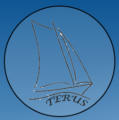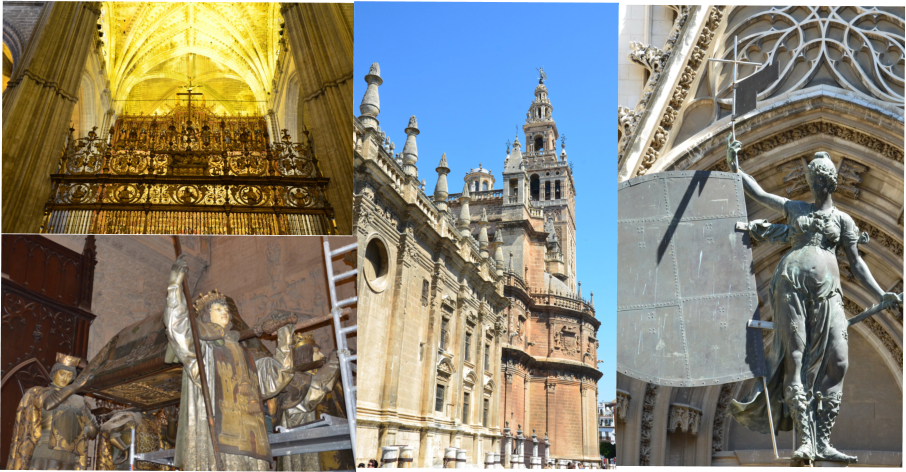











Our Journey: 2015
Cadiz & Seville: (19 June-28 June 2015)

While continuing our Journey towards Gibraltar we decided to make a stop in the city of Cadiz.This city has only a few historial buildings mentioned in the guides even if the origin of
Cadiz.This city has only a few historial buildings mentioned in the guides even if the origin of Cadiz can be traced back to the Phoenicians. You can find a Roman theatre but regrefully in very
Cadiz can be traced back to the Phoenicians. You can find a Roman theatre but regrefully in very bad condition. Cadiz is of course an important harbor but certainly not the biggest in Spain. The
bad condition. Cadiz is of course an important harbor but certainly not the biggest in Spain. The real thing to do in Cadiz is to walk the narrow streets admiring the buildings as well as the many
real thing to do in Cadiz is to walk the narrow streets admiring the buildings as well as the many plazas you find at the intersections. We did not visit the cathedral as it seem to have only a few
plazas you find at the intersections. We did not visit the cathedral as it seem to have only a few interesting items compared to the one in Seville we had visited two days before. The market is
interesting items compared to the one in Seville we had visited two days before. The market is beautifull with a lot of tuna and swordfishes. North of Cadiz is the city of Seville, which
beautifull with a lot of tuna and swordfishes. North of Cadiz is the city of Seville, which certainly is a place to visit.
certainly is a place to visit. 
 The city is on the Alquivir river. Many famous sea expeditions started out from Seville. Amongst
The city is on the Alquivir river. Many famous sea expeditions started out from Seville. Amongst them Magelan and Christopher Columbus for his third trip to the West Indies. The city became
them Magelan and Christopher Columbus for his third trip to the West Indies. The city became extremely rich in the 17 century as it was the only one that was allowed to trade with the West
extremely rich in the 17 century as it was the only one that was allowed to trade with the West Indies. Every boat that arrived was filled with gold and silver. The coffin of Christopher
Indies. Every boat that arrived was filled with gold and silver. The coffin of Christopher Columbus can be seen in the cathedral indicating how much the people of Seville we’re thankful
Columbus can be seen in the cathedral indicating how much the people of Seville we’re thankful to him. Besides the wealth brought from the West Indies, because the city got
to him. Besides the wealth brought from the West Indies, because the city got 
 extremely rich, its cultural development has been extraordinary. You will be impressed by the
extremely rich, its cultural development has been extraordinary. You will be impressed by the beauty of this city and if you stop in Seville you definitely need to set time aside to visit the
beauty of this city and if you stop in Seville you definitely need to set time aside to visit the Cathedral, the Alcazar Palace, the “Los Venerables Hospital” the Pilatos House as well as the
Cathedral, the Alcazar Palace, the “Los Venerables Hospital” the Pilatos House as well as the Indian archives.The latest building contains a valuable treasure as all the manuscripts of Spanish
Indian archives.The latest building contains a valuable treasure as all the manuscripts of Spanish
 sea expeditions have been brought under one roof. More important is that an important effort
sea expeditions have been brought under one roof. More important is that an important effort  is made to make all the documents available on the net so that everybody can consult them. If
is made to make all the documents available on the net so that everybody can consult them. If you want to learn more about each building do not hesite to click on the hyperlinks. A more
you want to learn more about each building do not hesite to click on the hyperlinks. A more modern building is the Plaza Espana which has an Azulejo (bleu ceramic tiles) panel for each of
modern building is the Plaza Espana which has an Azulejo (bleu ceramic tiles) panel for each of the 52 provinces of Spain.
the 52 provinces of Spain.
 Cadiz.This city has only a few historial buildings mentioned in the guides even if the origin of
Cadiz.This city has only a few historial buildings mentioned in the guides even if the origin of Cadiz can be traced back to the Phoenicians. You can find a Roman theatre but regrefully in very
Cadiz can be traced back to the Phoenicians. You can find a Roman theatre but regrefully in very bad condition. Cadiz is of course an important harbor but certainly not the biggest in Spain. The
bad condition. Cadiz is of course an important harbor but certainly not the biggest in Spain. The real thing to do in Cadiz is to walk the narrow streets admiring the buildings as well as the many
real thing to do in Cadiz is to walk the narrow streets admiring the buildings as well as the many plazas you find at the intersections. We did not visit the cathedral as it seem to have only a few
plazas you find at the intersections. We did not visit the cathedral as it seem to have only a few interesting items compared to the one in Seville we had visited two days before. The market is
interesting items compared to the one in Seville we had visited two days before. The market is beautifull with a lot of tuna and swordfishes. North of Cadiz is the city of Seville, which
beautifull with a lot of tuna and swordfishes. North of Cadiz is the city of Seville, which certainly is a place to visit.
certainly is a place to visit. 
 The city is on the Alquivir river. Many famous sea expeditions started out from Seville. Amongst
The city is on the Alquivir river. Many famous sea expeditions started out from Seville. Amongst them Magelan and Christopher Columbus for his third trip to the West Indies. The city became
them Magelan and Christopher Columbus for his third trip to the West Indies. The city became extremely rich in the 17 century as it was the only one that was allowed to trade with the West
extremely rich in the 17 century as it was the only one that was allowed to trade with the West Indies. Every boat that arrived was filled with gold and silver. The coffin of Christopher
Indies. Every boat that arrived was filled with gold and silver. The coffin of Christopher Columbus can be seen in the cathedral indicating how much the people of Seville we’re thankful
Columbus can be seen in the cathedral indicating how much the people of Seville we’re thankful to him. Besides the wealth brought from the West Indies, because the city got
to him. Besides the wealth brought from the West Indies, because the city got 
 extremely rich, its cultural development has been extraordinary. You will be impressed by the
extremely rich, its cultural development has been extraordinary. You will be impressed by the beauty of this city and if you stop in Seville you definitely need to set time aside to visit the
beauty of this city and if you stop in Seville you definitely need to set time aside to visit the Cathedral, the Alcazar Palace, the “Los Venerables Hospital” the Pilatos House as well as the
Cathedral, the Alcazar Palace, the “Los Venerables Hospital” the Pilatos House as well as the Indian archives.The latest building contains a valuable treasure as all the manuscripts of Spanish
Indian archives.The latest building contains a valuable treasure as all the manuscripts of Spanish
 sea expeditions have been brought under one roof. More important is that an important effort
sea expeditions have been brought under one roof. More important is that an important effort  is made to make all the documents available on the net so that everybody can consult them. If
is made to make all the documents available on the net so that everybody can consult them. If you want to learn more about each building do not hesite to click on the hyperlinks. A more
you want to learn more about each building do not hesite to click on the hyperlinks. A more modern building is the Plaza Espana which has an Azulejo (bleu ceramic tiles) panel for each of
modern building is the Plaza Espana which has an Azulejo (bleu ceramic tiles) panel for each of the 52 provinces of Spain.
the 52 provinces of Spain.



























